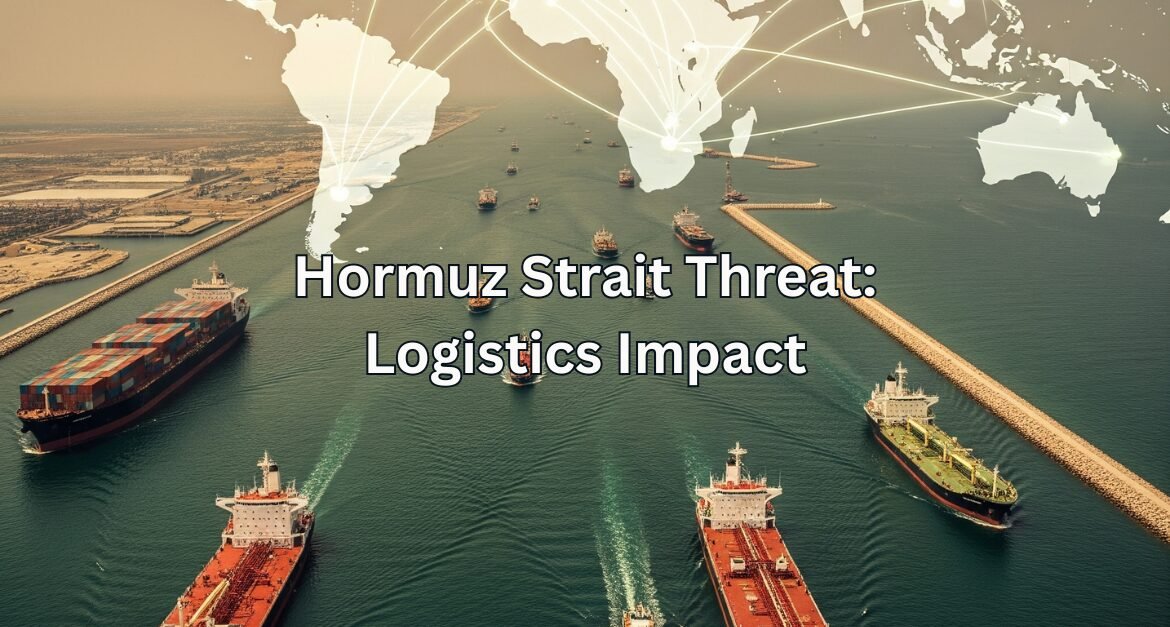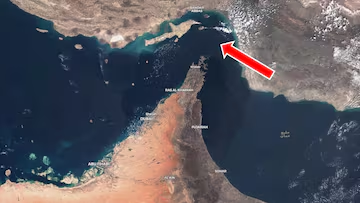
Navigating the Storm: How the Strait of Hormuz Threat Impacts Global Logistics and Your Supply Chain
The world watches with bated breath as tensions escalate in the Middle East. Recent reports indicate that Iran’s parliament has conditionally approved a measure to close the Strait of Hormuz, a critical oil shipping lane, in response to rising geopolitical friction. While the final decision rests with the Supreme National Security Council, the very possibility of such a closure sends ripples of concern throughout global markets, particularly for the logistics and supply chain industries.
For any logistics company, understanding and mitigating these risks is paramount to ensuring the seamless flow of goods and maintaining supply chain resilience for clients.
The Unthinkable: Why the Strait of Hormuz Matters to Logistics
To grasp the magnitude of this potential disruption, it’s essential to understand the Strait of Hormuz’s pivotal role in global commerce. This narrow waterway, connecting the Persian Gulf to the open ocean, is a true chokepoint. Approximately 20-30% of the world’s crude oil and a significant portion of liquefied natural gas (LNG) transit through it daily. Major oil producers like Saudi Arabia, Iraq, the UAE, Qatar, and Kuwait rely heavily on this passage to export their energy resources to global markets. Beyond energy, the Strait also handles a substantial volume of container traffic, serving major Gulf ports and accounting for over 3% of global container traffic, impacting a wide array of goods from construction materials to consumer products.

A closure, even a temporary one, would have immediate and severe consequences for the logistics sector:
- Soaring Fuel Costs: The Inflationary Spiral: The most direct and immediate impact would be on fuel prices. With a significant portion of global crude oil and LNG supply choked off, prices would skyrocket. Analysts predict Brent crude could briefly hit $110 per barrel, with some “worst-case scenarios” pushing prices to $130-$150. This surge directly translates to higher bunker fuel prices for shipping vessels, increased aviation fuel costs for air cargo, and inflated diesel prices for trucking and rail. Logistics companies would face a dramatic increase in operational expenditure, leading to a ripple effect of higher freight rates across all modes of transport. This would then feed into broader inflationary pressures, making everything from consumer goods to industrial components more expensive to transport.
- Unprecedented Supply Chain Disruptions and Delays: The closure of such a critical chokepoint would bring immediate and widespread supply chain disruptions. Vessels currently transiting or scheduled to transit the Strait would be halted or forced to reroute. There is no alternative sea route that can fully compensate for the volume passing through Hormuz.
- Maritime Mayhem: Supertankers and container ships would be compelled to take significantly longer alternative routes, such as circumnavigating the Cape of Good Hope, adding weeks to transit times. This not only increases fuel consumption but also strains vessel capacity globally, leading to equipment shortages and further delays. For time-sensitive cargo, this could be catastrophic.
- Port Congestion and Strain: Ports outside the immediate affected area might see an influx of rerouted traffic, leading to congestion and delays in loading and unloading. This would create bottlenecks that cascade through the entire logistics network.
- Impact on Manufacturing: Industries reliant on oil and gas as raw materials (e.g., plastics, chemicals) or dependent on just-in-time inventory would face severe shortages and production halts. The disruption of critical components and raw materials would lead to manufacturing delays and lost revenue.
- Skyrocketing Insurance Premiums and Security Concerns: The heightened risk in the region would immediately translate to soaring war risk premiums for vessels transiting anywhere near the affected areas. These premiums, already experiencing increases, would become exorbitant, significantly adding to the cost of shipping and potentially deterring some carriers from operating in the region altogether. Beyond financial costs, the threat of harassment, GPS jamming (which has already affected nearly 1,000 vessels daily in the region), or even the use of sea mines, creates immense security concerns for crews and vessels, complicating operations and increasing the need for protective measures, potentially including naval escorts which further reduce efficiency.
- Limited Alternative Infrastructure: While some countries like Saudi Arabia and the UAE have invested in pipelines to bypass the Strait, their combined capacity is far less than the 20 million barrels per day that move through Hormuz. These alternatives are insufficient to mitigate the full impact of a prolonged closure, particularly for LNG and containerized cargo which have even fewer viable alternatives. Overland routes, while an option for certain types of freight, come with their own infrastructure limitations and higher costs.
The potential closure of the Strait of Hormuz is a stark reminder of the fragile interconnectedness of global supply chains and the immense impact geopolitical tensions can have on the movement of goods. The logistics industry, as the backbone of global trade, faces unprecedented challenges in navigating such a complex and volatile scenario.
Global Economic Downturn: The cumulative effect of these logistics challenges – higher costs, delays, and supply shortages – would ripple through the global economy. Economists warn that a sustained disruption could slash global GDP by 1-2%, raising the risk of a worldwide recession. For economies heavily reliant on Middle Eastern oil imports, like India, China, Japan, and South Korea, the impact would be particularly severe, affecting refinery operations, trade balances, and fueling domestic inflation.
The potential closure of the Strait of Hormuz is a stark reminder of the fragile interconnectedness of global supply chains and the immense impact geopolitical tensions can have on the movement of goods. The logistics industry, as the backbone of global trade, faces unprecedented challenges in navigating such a complex and volatile scenario.




